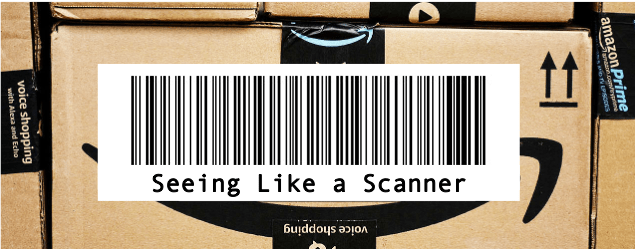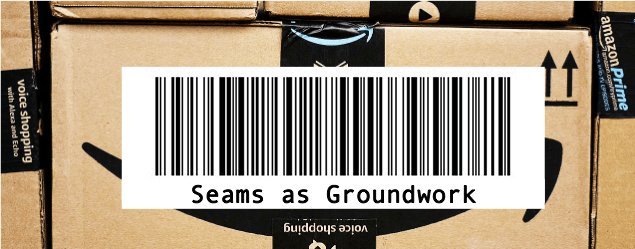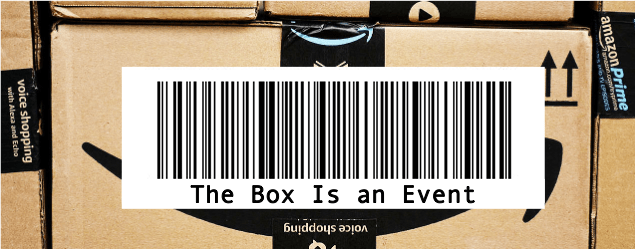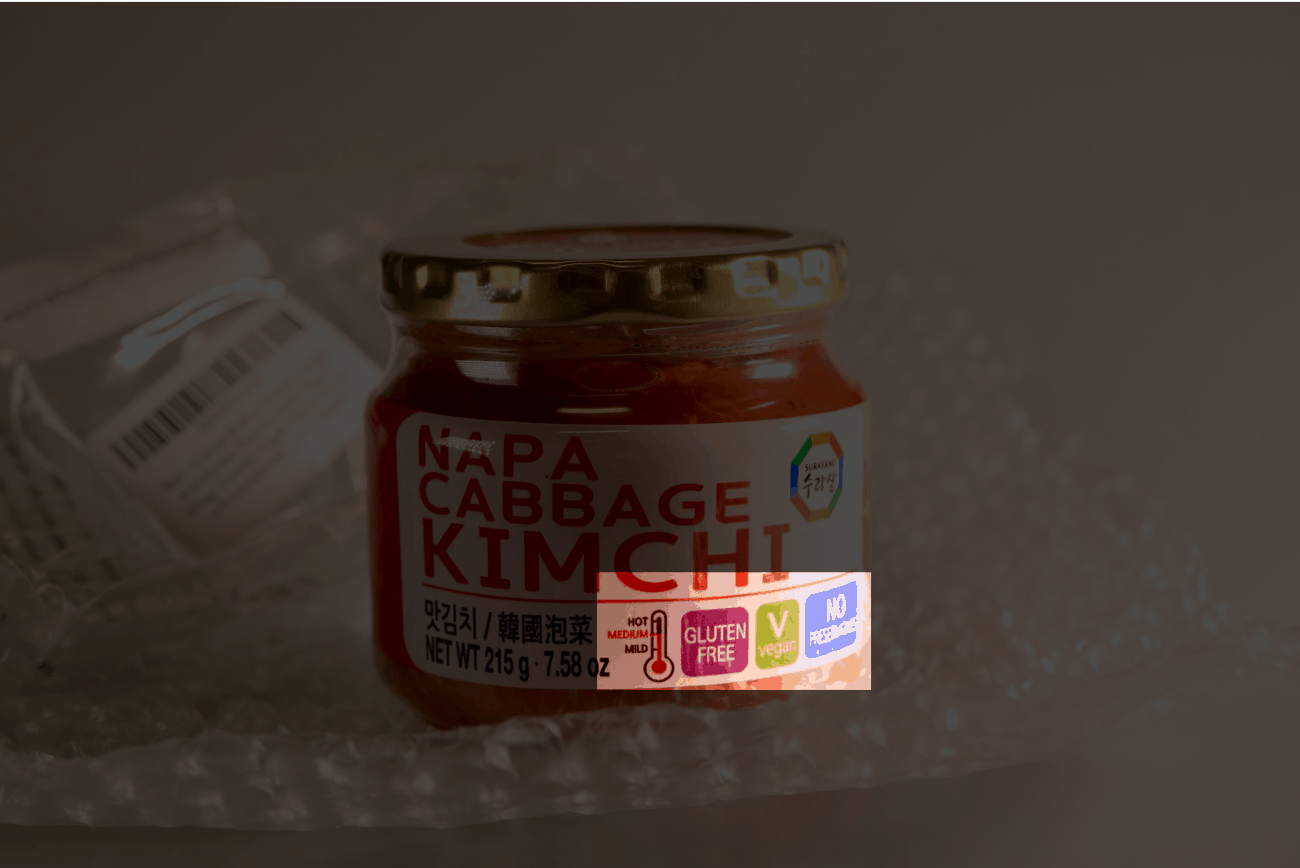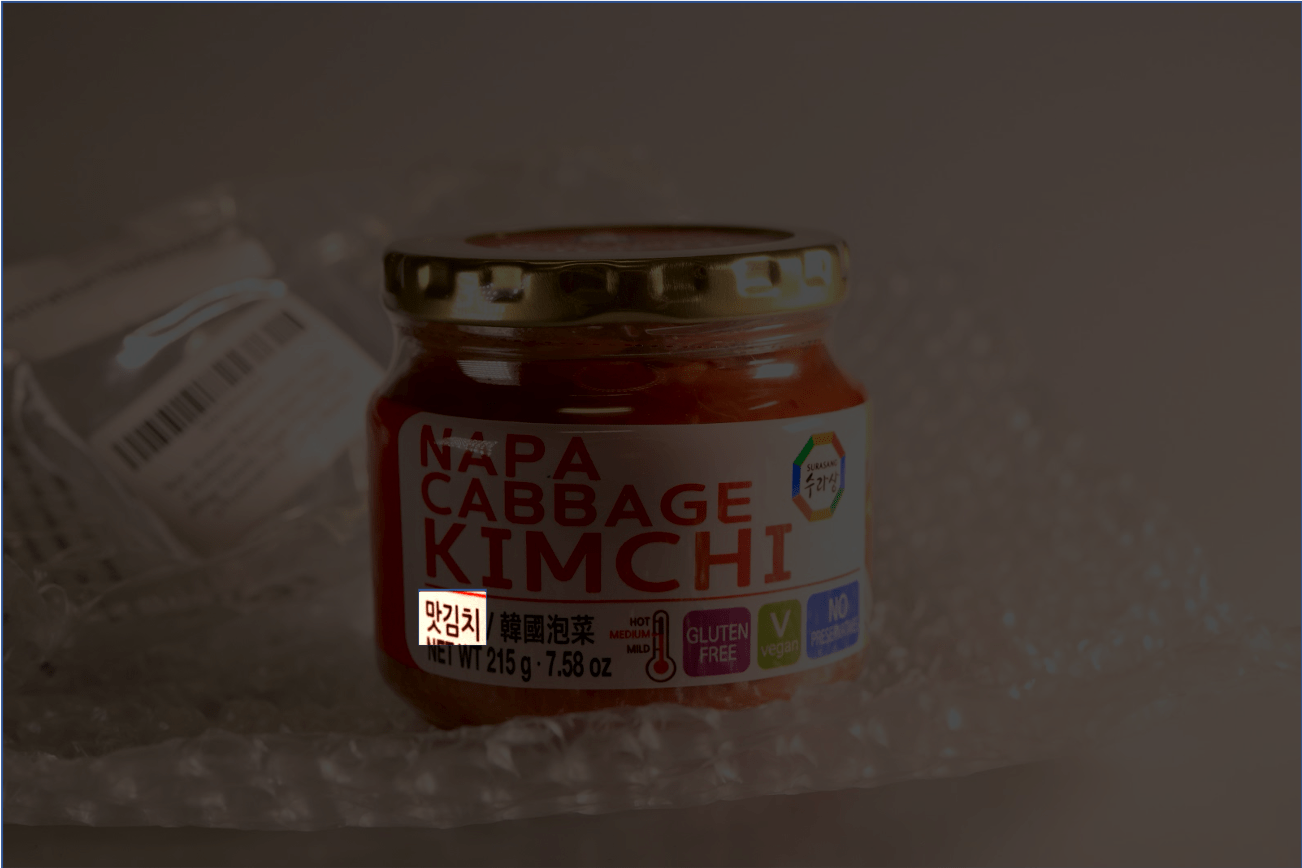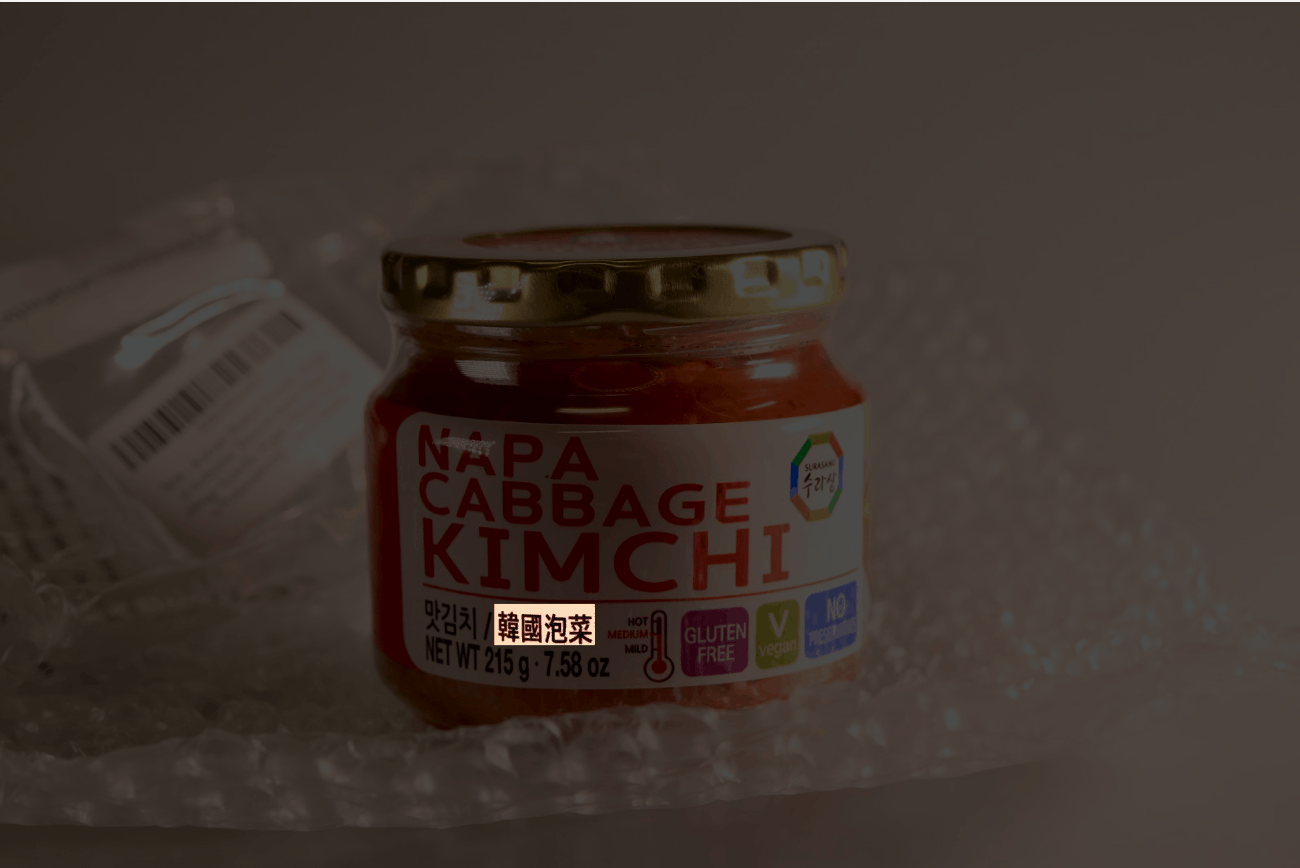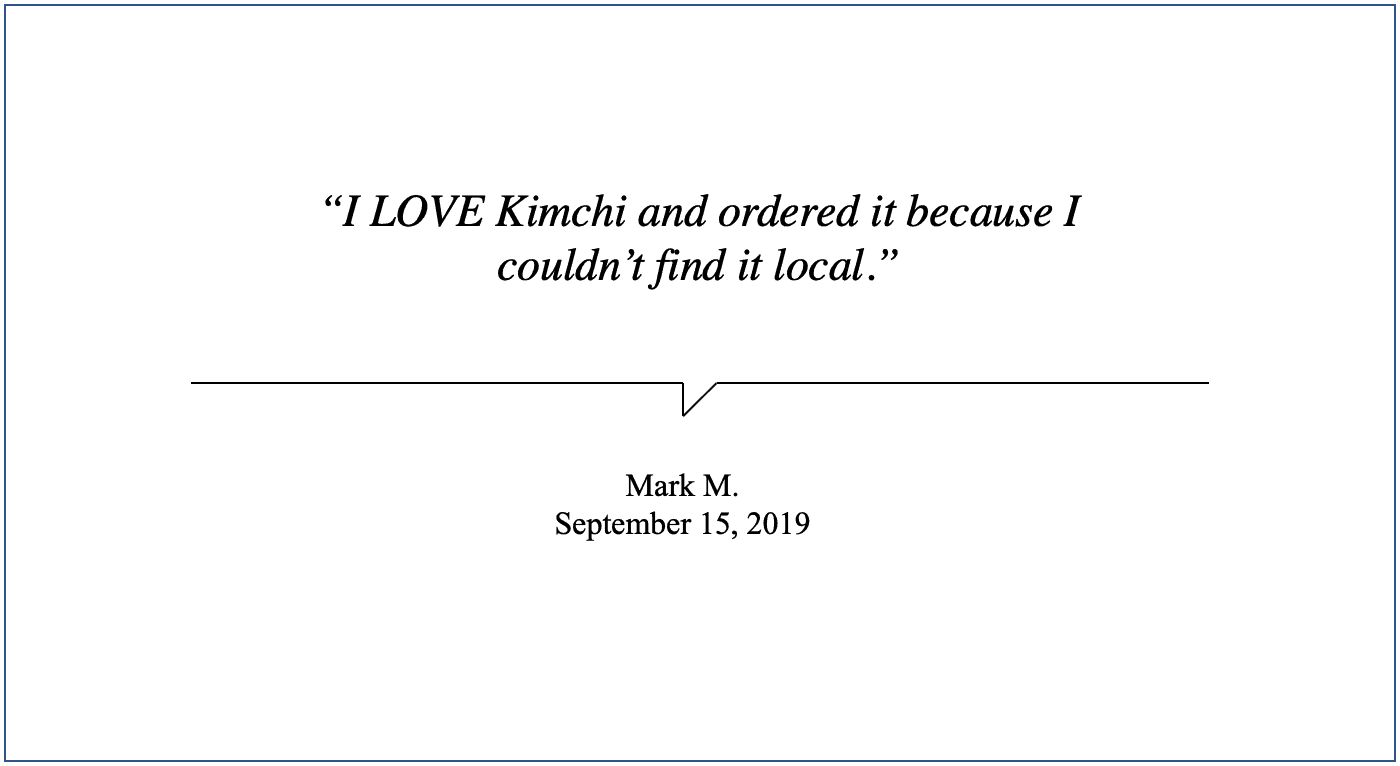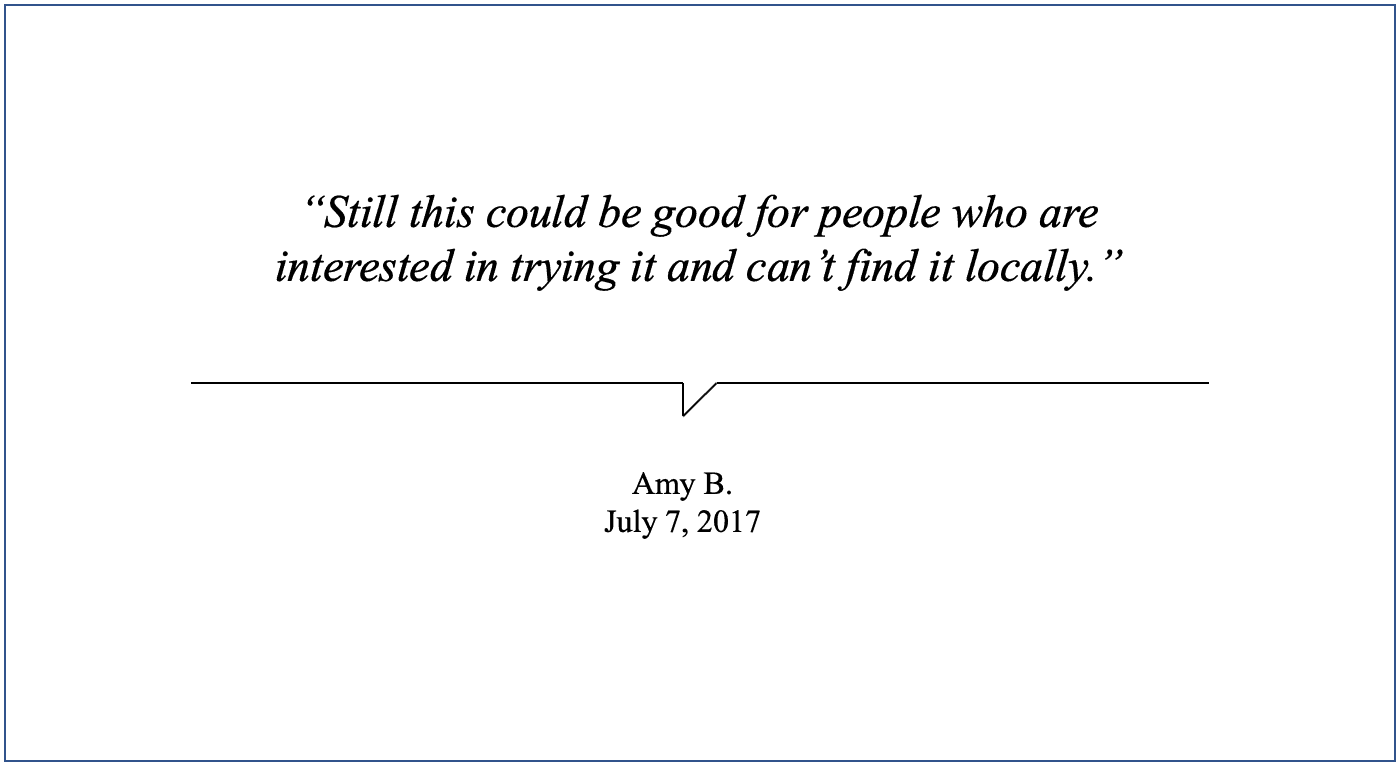
In the classic origin tale of “The Box” and its seductions, Pandora is driven by curiosity—a distinctly feminized will to knowledge—to unleash chaos on mankind, her founding act of unboxing scrambling the prior all-male world of utopic humans now plunged into a darker reality where misery, pestilence, etc. roam. With a name meaning “gift” or “giver,” Pandora herself is an assembled product—a customized, poisoned gift of the gods—engineered to lure men into receiving a mysteriously new package delivered directly to their home: the desirable and desiring Figure-With-The-Box. The act of receiving the gods’ delivery, like the act of unboxing, promises some kind of fulfillment. But that promise is ultimately dashed and out of reach. When Pandora gets around to closing the lid on the havoc she’s released, she finds that in lieu of any satisfaction of her original curiosity-cum-desire there is only hope lingering in the emptied space where chaos had burst forth and escaped. In the end, hope, along with chaos, recast the seductions of The Box and its unboxing as a curious, if opaque, dream of “fulfillment”—as something constantly displaced and deferred in the movement from delivery to receiving, packaging to un/boxing.
What’s in The Box?
 |
 |
 |
 |
Since the origin myth of Pandora, the dark seductions of The Box continue to be the stuff of pop culture ruminations (not to mention academic fascination a la Latour 1987, 1999); its alluring packaging and surface opacity, its call to the risqué pleasures of the hidden and the unknown, perhaps best captured by the now viral and meme-worthy question: What’s in the Box? The answer, whether in the form of cartoon characters, internet cats or horror films, tells the same story: there is anticipation and often surprise in the act of unboxing. Shock. Laughter. Sometimes horror too. But fulfilment is, at best, fleeting. It is almost always somewhere else, the deferred some-thing goading you into the next act of unboxing.

Fulfillment. The Oxford dictionary tells us that there are four distinct senses of this term. The first two refer to the act of doing what was hoped for and expected (definition #1) or what is required and necessary (#2). Definition #3 describes the feeling of being satisfied and happy with what you are doing and have done. Then there is the fourth and most novel definition, which recast “fulfillment” in the distinct commoditized terms of the logistics industry: as the act of packing and sending something that the customer has ordered.
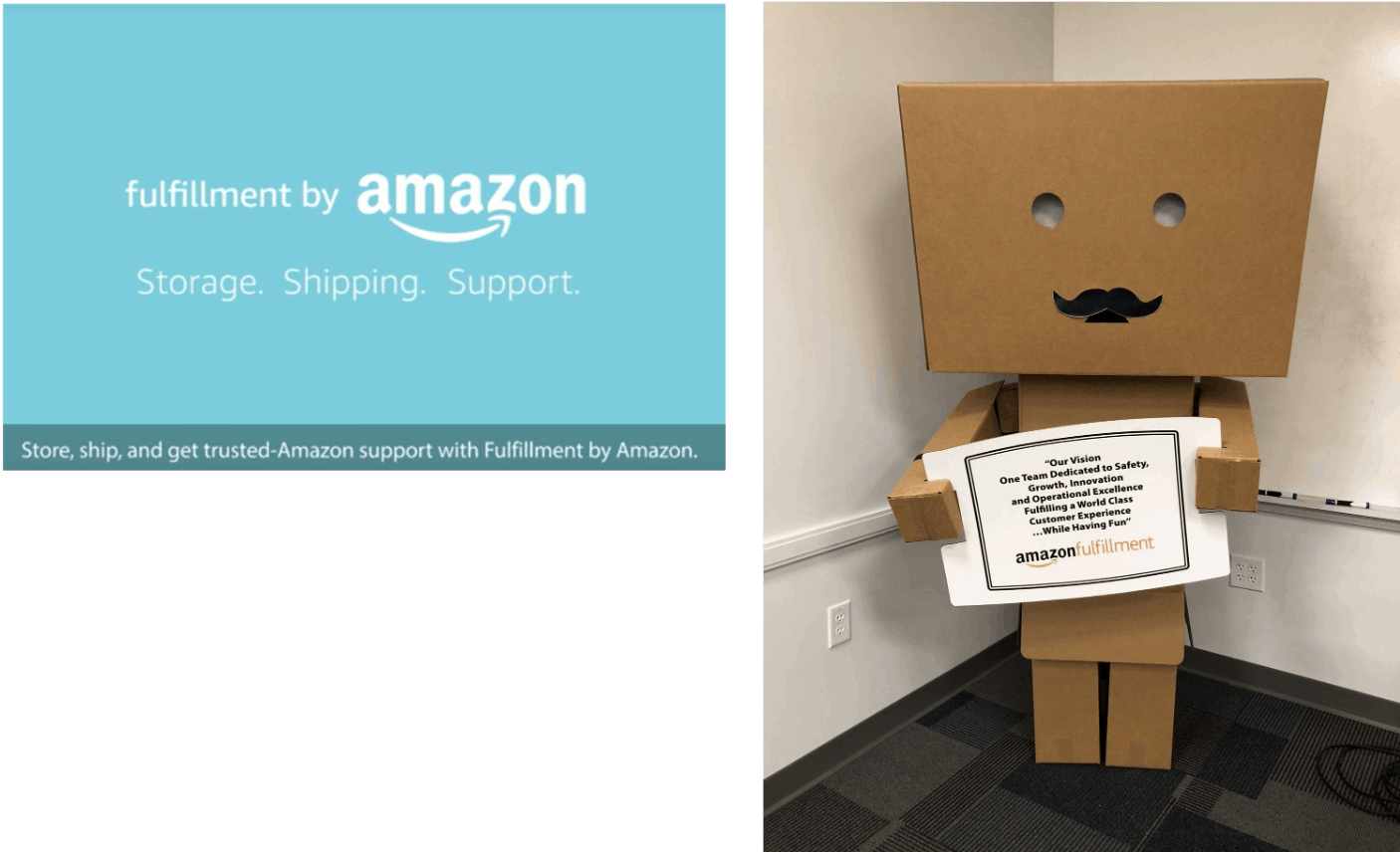
Fulfillment is the operating principle by which the world’s foremost logistics and e-commerce corporation, Amazon, stakes its vision as “the earth’s most customer-centric company.”
The Amazon Box with its distinctive smiling arrow is the icon of this dream of fulfillment; its recurring images of delivery and receipt, packaging and unboxing conjuring the very “magic” of FBA—Fulfillment By Amazon, its branded logistics product for sale. Like Marx’s wooden table which comes magically alive as commodity fetish and dances on its head, the Amazon Box not only smiles, it acquires a persona and a body as FBA (i.e., logistics as the commodity), singing as well as dancing its way, en route, to the dream of “Fulfillment.”


But sometimes the dream of Fulfilment animates the dark side of The Box, the hidden and unleashed chaos shadowing the hope of “the order”—the customer-centric desire of on-demand purchase-and-delivery—now reimagined as a game of creepy ambiguity (Amazon Roblox) or outright dystopic exchange (What the Box?).


Scholars of what is sometimes tagged “the Logistics Revolution” often hearken back to a different Box as the game-changing vessel in promoting the globalizing dream of Fulfillment: the standardized shipping container (Levinson 2016, Klose 2015). Innovated in the mid-20th century, the container is both modular device and model for reformatting space-time from a world of architectural “volume” to operational “network,” from territorial “figures” to procedural “flows” (Lyster 2016: 1-3). Increasingly, the container is also a metaphor for other design projects, so that we might describe a certain kind of architecture, computer program or business model as operating “like a transport container” (Klose 2015: 56). In this case, the container as The Box marks not just the fetish of “network” and “flow” designs but moreover, its transductive value as a mediator of inputs and outputs or more broadly, as “a general metaphor for all things fillable and evacuable” (Klose 2015: 81).

This key containerized dynamic of fillable and evacuable “flows” can also work recursively; that is, in so far as The BOX itself is scalable, it can be variously packed within other containers as in the classic nesting design of Russian Matryoshka dolls (Klose 2015: 68-9). Indeed, more than just capturing “flows,” the Matryoshka principle of the-box-within-boxes has itself become a design model for recasting all kinds of businesses and information systems according to the logistical values of “interoperability,” “resilience” and “optimization” in a global economy ever attached to the fantasy of “seamless” circulation.

Yet in the space-time between boxing up and unboxing the flow of things (and their related flows of transport and information), there remain dark gaps and sutured zones that haunt the dream of Fulfillment and in turn, invite other possibilities for living and thinking outside The Box.
In what follows, we offer a field guide to logistical worlds as configured by The Box and its various acts of un/boxing. We attend to the fetish of The Box as well as its unwinding into three distinct, yet related, movements: the processes of (1) boxing up, (2) unboxing and (3) inhabiting the seams (AKA the “/” in un/boxing) in logistical landscapes aspiring for ever more efficient and magical “seamless” flows (Vertesi 2014).
Choose your route to Fulfillment. Scan (click) a box below:
Seeing Like a Scanner
By Kenzell Huggins

Cardboard boxes, and the products they are meant to hold, are covered in black lines and dots. These tend to be on one surface of the box, accompanied by alphanumeric combinations that are interpretable to English speakers familiar with the genre of American mail delivery systems: a name, Julie Chu; a weight, 1.2 Lbs; an address, 1126 E 59th ST, University of Chicago Dept of Anthropology…and so on. From just this alphanumeric portion of the graphic artifice along with the requisite knowledge and maps, a human should be able to deliver the package to a location. Yet humans do not accomplish the work alone, and that is why alphanumeric graphics are yet more arcane symbols in codes uninterpretable to the average human.

Those black lines and dots form barcodes (one-dimensional) and matrix codes (two-dimensional).

These codes are combinations of inputs which make the package legible to a computerized system. To interact with these barcodes and the computer-managed logistical system simultaneously, humans need to utilize scanning devices. Within every step of the fulfillment process, from warehouse to doorstep, the scanner not only attends to the package but also the human laborer. Hence, the scanner is the tool that also makes the human laborers legible within the computerized logistics process; depending on the organization, watch for how scanners track each worker as they clock in and out of the device, track what packages they’ve handle, or track their movement through the space of the warehouse or the city. The barcode thus boxes the material form of the packaged commodity into an electrical data package to be stored in yet another box, the server within the data center.

But for now, let’s note the modes of attending to scanners themselves. The form of the scanner emerges from the interplay of desires for standardization of the barcode against desires for scanners to be versatile and work across a range of barcode symbologies. One could consider the versatility of the scanning technology as a margin of indeterminacy that modulates how the scanner can interact with other technical systems and human beings. Most scanners either work by using light (laser or infrared) to reflect the sequence of light and dark spaces back into the scanner–the cheapest method, still used in retail settings. Otherwise, scanners use a camera to capture a digital image of the code and interpret the pattern with reference to a symbology using a particular software–the method most quickly expanding into everyday use with smartphones and QR codes. Often, the code needs to be aligned in a specific orientation in order to be readable, but some symbologies and softwares are designed to be readable in any orientation. These are usually matrix codes.
Long before one sees light from a scanner, one might encounter the characteristic noise of the scanner. The familiar metronomic ambient noise of American grocery store lines serves as auditory confirmation that the package has been registered by the system for both the worker and the consumer. Within warehouses, such noises provide the rhythm of labor, providing the grooves that help workers recognize if they are setting a pace to hit target times. Attending to the sensory array of visual and audio cues, learning to see like a scanner, is essential for approaching and remixing the vital seam of scanning in modern logistics practices.
Choose the next route to Fulfillment:
The Box is a Variable
By Jack Mullee

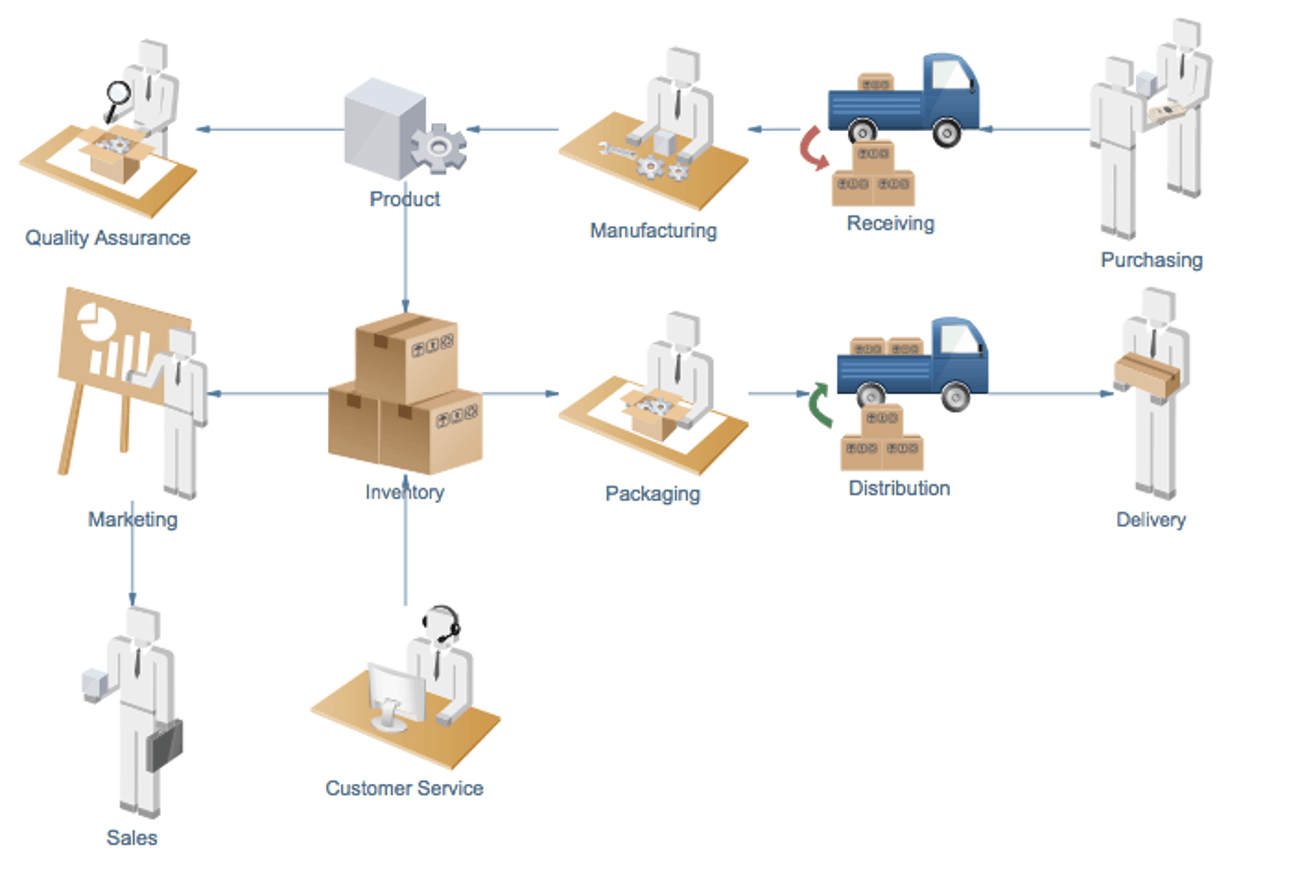
In a logistical flow, a box is a kind of variable. More accurately, the box is an active variable-maker. It transforms the some-thing inside into a specific variable that “speaks” in the context of a supply-chain formula. Another way of putting this is to say that the box translates on behalf of its contents. The thing-inside cannot speak to the supply chain (a la Mitchell 2002, “Can the mosquito speak?”) but the box can. Through its label, the box speaks and is heard in the languages of a flat, networked world. The ensuing communiques are sent intermittently from the box to a distant computer server, where the box is always recognized as a variable in a double-sense. It is a concrete thing roving from node to node, and it is a piece of code, fixed in server space but varying in “value” as its cardboard counterpart moves.

Data center magic. Gif source, Audio source
Somewhere, on a server, likely in a faraway data center, the movements of the box will be registered as it passes under scanners and through ports. Both the box and the data it generates “concretely exist”, as Robinson admits of the programmer’s variable, as well. Algorithms and variables “are implemented on a computer, which means they must concretely exist in a computer’s memory”, he writes (2008, p.260). Hence not only is the box qua variable concrete, but so also is the data that represents the box’s location to a supply chain manager. In other words, the logistics of fulfillment depends upon (at least) two types of concrete variables, each of which operates as a condition of fulfillment: one a cardboard box, and the other an electronic datum. Each of these variables is always “situated in a particular place”, and each such place has its politics, its controversies and its contradictions. The magic of the box qua variable is precisely its ability to appear on the recipient’s doorstep without recalling any such places or politics.
“A variable is a box stripped of sides, top, and bottom, abstracted away from geometry and physics, of no especial size or shape or color nor situated — so far as the programmer who conjures it needs to know or worry about — in any particular place.” – Derek Robinson (2008, p. 260)
Choose the next route to Fulfillment:
Seams as Groundwork
By Julie Chu
Prairie Ambient recording by Julie Chu.
20,283 acres. 30 square miles.
That is the size of the largest nationally protected space of “Chicago Wilderness” where we found ourselves listening to the call of birds while wandering along a gravelled trail amidst restored prairielands. Situated about an hour’s drive from the city proper, the Midewin National Tallgrass Prairie was established in 1996 with the vision of reconnecting people in Illinois, “The Prairie State,” with the pristine signs of their “prairie past,” including “the chance to view bison in their native habitat” (National Foundation Forest 2011: 1-5). But it was not bison that we glimpsed clustered in some “habitat” in the near distance. Carried along the swaying breeze with the mix of birdsong, the industrial churn of the orange cranes moving shipping containers between rail and road traffic signaled another soundscape (play audio above), another space-time: the logistical world of on-demand commerce abutting against and interpenetrating this landscape of recently restored “nature.”
6,400 acres. 15 million square feet of real estate.
That is the available space for commercial development at CenterPoint Intermodal Center, the largest logistics park in Chicagoland situated next to Midewin in Joliet/Elwood, which happens to be the largest inland port in the Northern Hemisphere. The orange cranes in the backdrop of the prairieland belong to CenterPoint’s neighbor, the BNSF Logistics Park, another intermodal facility for moving containers between railroads and trucking routes, and in and out of the more than half a billion square feet of warehouse sortation, distribution and delivery centers dotting Chicago’s key interstate highways (AKA “logistics corridors”) from the outer suburbs of Will and Dupage Counties into the city proper in Cook County.

Both Midewin and CenterPoint emerged out of the post-Cold War 1990s as part of the decommissioning and privatizing breakup of the 40,000-acre Joliet Army Ammunition Plant which was once the largest manufacturer of military explosives in the world. En route to CenterPoint and along our hike through Midewin, you can see some of the material remnants of this earlier military-industrial logistics network: the last bits of rusting rail tracks that once moved over one billion pounds of TNT from the munitions factory in the Chicago prairielands onto the Army cargo trucks and roads across the country and then into the various air and ground campaigns overseas from World War II to Korea and Vietnam and into the first Gulf War.
In our various treks between Chicago, the city proper, and the exurban port area of Joliet/Elwood, the seams across nature/military/commerce became routine zones of ethnographic encounter. Their murky ground of mixed use and sensory disorder repeatedly called our attention to the persistence of prior logistical worlds: old rail lines delivering bombs and dressed meat crisscross and sit alongside the even older canal network that once moved grain, ice and timber; the canals run alongside the prior riverine routes of indigenous exchange and later, the settler-colonial fur trade; and laminated on top of all these overlapping infrastructures, a key fiber optic cable of Chicago’s internet backbone now tracks alongside the concrete expanse of I-55—one of the city’s main interstate highways and “logistics corridors” running from Lake Michigan and downtown Chicago to Joliet/Elwood and beyond.
Seams Tour video by Julie Chu.
On the ground in the town of Elwood where the prairieland and the intermodal centers intersect, you can reminisce with an old foreman of one of the munitions factory waxing nostalgic about the state-of-the-art logistical network of making and distributing bombs—its 10,000 full-time blue collar jobs now replaced by mostly insecure, temporary laborers boxing or delivering goods out of one of the many warehouse distribution centers. You can take in the cranes in Midewin’s horizon while chatting with a local prairieland promoter who grumbles about the ever-expanding footprint of intermodal centers and their diesel-spewing fleets of cargo trucks barreling down residential streets not designed to bear such heavy and dangerous traffic. And you can take in the grandiose yet forlorn sight of the new-ish townhall of Elwood, somewhat ironically dubbed the “Taj-Mahal” now that the town has found itself $30 million in debt after handing out tax rebates to attract CenterPoint and other logistics-related businesses to come and usher in a promised boom in new tax-paying jobs and other revenue generators that has yet to materialize (cf. Sammon 2019).
But the logistics industry does not take in the sights and sounds of its effects (and affects) from the ground. They work the ground and its seams from the panoramic view above.

Logistical space is landscape smoothed over from a bird’s eye view to take in the larger checkerboard of intersecting lines and boxable sites that can be optimized for “immense cost savings” and “unmatched connectivity” (as CenterPoint puts it above…). Surveyed from the air, the ground is reworked as gridded territory and geographic datapoint for projecting market share through the optimized distribution of storage, sorting and delivery locations; to make calculable patterns of traffic flow and efficient interchange across water, rail and roads as well as of population growth and relative density in movements between (urbanized) centers of consumption and (exurban) “corridors” of logistical warehousing and transport labor. First pioneered by Walmart’s founder, Sam Walton, who regularly took to the sky in his own private plane in order to plot out his expanding network of “distribution centers” (LeCavlier 2016), this logistical remaking of the ground has intensified even more under the recent dominance of Amazon with its rapidly expanding footprint of warehouse “fulfillment centers” and branded delivery fleets of Amazon “Flex” drivers and subcontracted “Delivery Service Partners.” Starting with two fulfillment centers in 1997 encompassing 93,000 square feet in Seattle and 202,000 square feet in Delaware, Amazon now occupies over 170 million square feet of warehousing space in the U.S. with a network of 500-plus facilities across 35 states and with 132 more sites planned for the near future (see MWVPL International 2020). In Will County alone, where the port of Joliet/Elwood is situated near Chicago, Amazon has gone from zero presence in 2015—when it launched its two-hour delivery program, Prime Now—to becoming the county’s single largest employer in 2017 (and in the process, replacing Walmart for the title).
Click to explore Amazon in Chicagoland map.
Logistical space aspires for “seamless” flows by — counterintuitively — drawing seams between two distinct zones of circulation. On the one hand, it recasts the exurbs as the staging grounds for sorting, boxing and distributing goods in and out of massive million square-feet warehouses via giant cargo trucks. On the other, it dots the urban core with smaller delivery stations and more nimble vans for maneuvering through dense city traffic in the final leg of getting The Box to the customer’s doorstep (AKA “last mile” logistics).
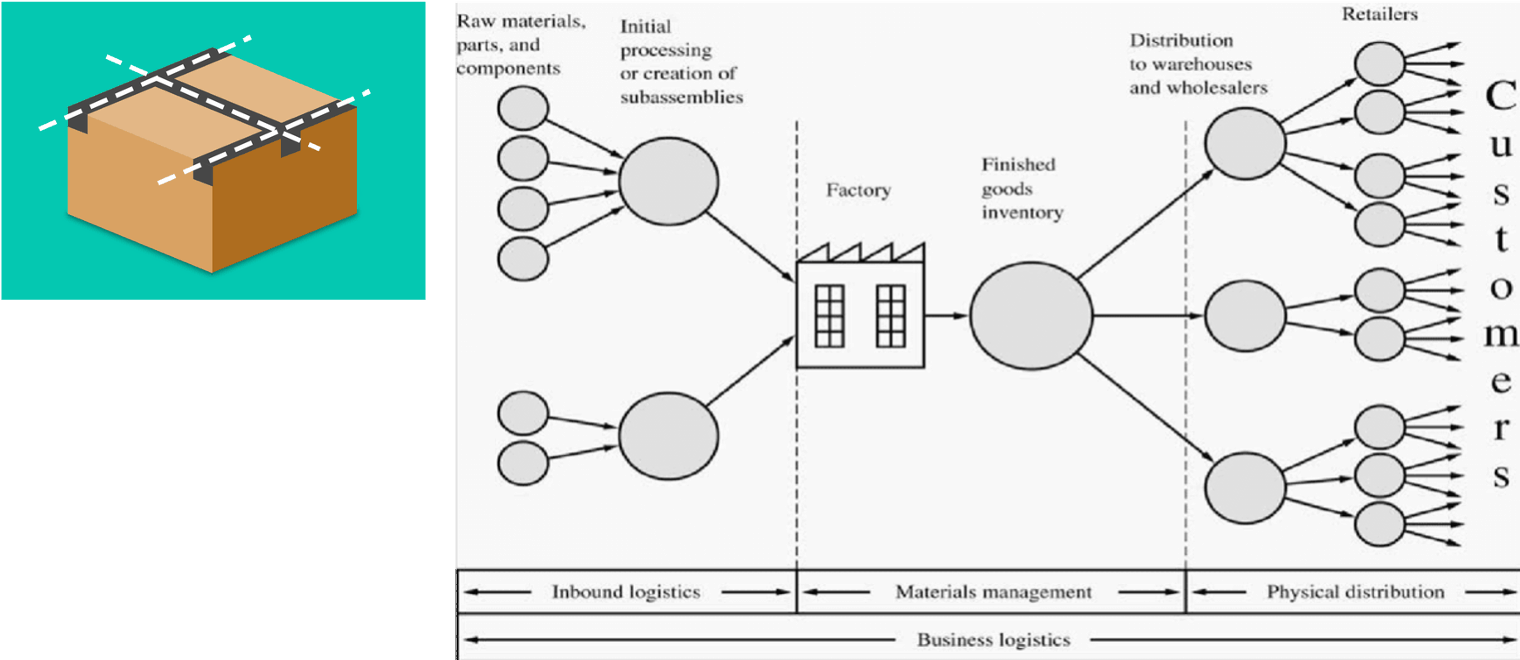
Indeed, seams are integral to the design of The Box. They work recursively, fractally, across logistical worlds in the quest for “unmatched connectivity” in the relay of flows (cf. Irvine and Gal 2000). Yet where there are seams, there are also possibilities for rupture and leakage.
Between the online click of your purchase and the arrival of The Box on your doorstep, sometimes packages can get lost while traversing the seams of inbound/outbound across the fulfillment center and the delivery station. The Box may arrive with its taped edges or sides split open, its contents scrambled or spilling out. And even when The Box comes as expected right on “Prime” Amazon time, you might still be in for a rude surprise as more than one customer discovered when faced with the leaky traces of waste management inherent to the ground game of “seamless” delivery.
The box waste of cardboard and various plastics routinely stack up on both ends of inbound and outbound processing through warehouses, not to mention, at customers’ homes. Belching trucks along logistics corridors thicken the air with noise pollution and diesel fumes. Then there are the “last mile” drivers, often operating under intense algorithmically managed pressures to forgo bathroom breaks to meet speedy delivery quotas. Sometimes these drivers resort to peeing into bottles while racing to meet their delivery targets and when all else fails, relieve themselves on any expedient corner along their routes. In several public scandals, some have even been caught on video by unhappy customers, who found more than The Box left at their home.

Warehouse workers, long-haul truck drivers and last-mile package handlers enjoy only a finite number of paid sick and vacation days per year. As the continuity of everyday life becomes increasingly contingent on the deliverability of The Box, feverish delivery workers are pressured to keep working the seams.
Choose the next route to Fulfillment:
The Box is an Event
By Harini Kumar
Two million square feet. This is the size of Amazon’s largest Box. Inside it are thousands of commodities, hundreds of “amazonians” (Amazon workers or associates), and a system devised to ensure that the dozen toilet paper rolls you ordered yesterday is packaged and delivered at your doorstep today. This Box is an Amazon fulfillment center, one out of more than a hundred and seventy-five around the world. Things arrive here from various vendors and are unboxed immediately to begin the process of fulfillment. An inconspicuous event this, but another, more glamorous kind of unboxing awaits the restless consumer. But first, the seemingly seamless process of fulfilling your request begins.


The fulfillment center is where incoming items are unboxed, stowed, picked, packed, and boxed again for shipping. Yellow railings, yellow bins, yellow arrows—overwhelming bursts of yellow flood these centers, trapped between multiple floors and conveyor belts. Between “pickers” (employees who pick and sort through commodities for boxing) and scanners, and more boxes. Curious visitors—public tours have been offered at Amazon fulfillment centers since 2015 to make the process more transparent—are guided through this maze, the tour guide hoping to impress upon them the “magic that happens after you click buy”, how a commodity is taken to its logical, logistical end, into a box and onward to a fulfillment of another kind.


Scaled down is The Box we’re all-too-familiar with, making its way through a logistical chain that we’re even more cut off from now than ever before. This cardboard box has undergone a process of testing for its durability even before reaching the fulfillment center, and has a life of its own beyond the supply chain and delivery world. You can get rich “unboxing”.
Unboxing no longer means removing something from a box. Unboxing is an event. It is a metaphor for a range of processes and affects.
If Amazon fulfillment center tours are a kind of unboxing, an act of unraveling the “magic” behind the journey of the box, another (more lucrative and pleasurable) kind of unboxing seduction lies in the virtual world.
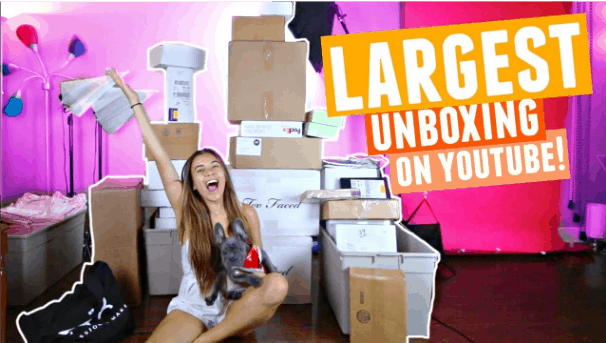
YouTube has made unboxing glamorous. Vloggers unbox packages, taking their time to reveal the prized commodity—a gadget, a toy, an item of clothing, even live animals—while voyeurs weigh in virtually.

The destination of the logistical supply chain is no longer your doorstep but the digital world, a thriving virtual economy. More than a decade ago, unboxing videos became such a big trend that a YouTube channel, Unbox Therapy, was started in 2010, with daily unboxing video uploads of mostly electronic gadgets. This channel currently has 16.3 million followers. The more theatrical the box and packaging, the more views say digital marketing experts.

The unboxing craze has also led to news headlines such as “Should children watch toy unboxing videos?” and “The bizarre, lucrative world of ‘unboxing’ videos”. As an advertising gimmick to announce their latest ThinkPad, computer giant Lenovo even “hired” a Montana grizzly bear to find and unbox the laptop in a fourteen minute Facebook live video.

As we continue to buy into the myth of magical seamlessness, the sonic and ocular lure of unboxing only gets more thrilling and creative, and all the more absurd, keeping us firmly glued to our screens. But there is one more sensory experience that’s gained frightening significance recently. As the world deals with tactility (don’t touch your face!) in forever changed ways, new anxieties around touching everyday surfaces abound. With a rapidly spreading infectious disease capable of living on cardboard for at least twenty-four hours (and other surfaces for much longer), the ordinary, ubiquitous box—passing through multiple hands before reaching you—may no longer be an object of huggable affection but something to be treated with caution and disinfectant wipes, ironically one of the most ordered items on Amazon right now.

Choose the next route to Fulfillment:
Jarring Expectations
By Heangjin Park
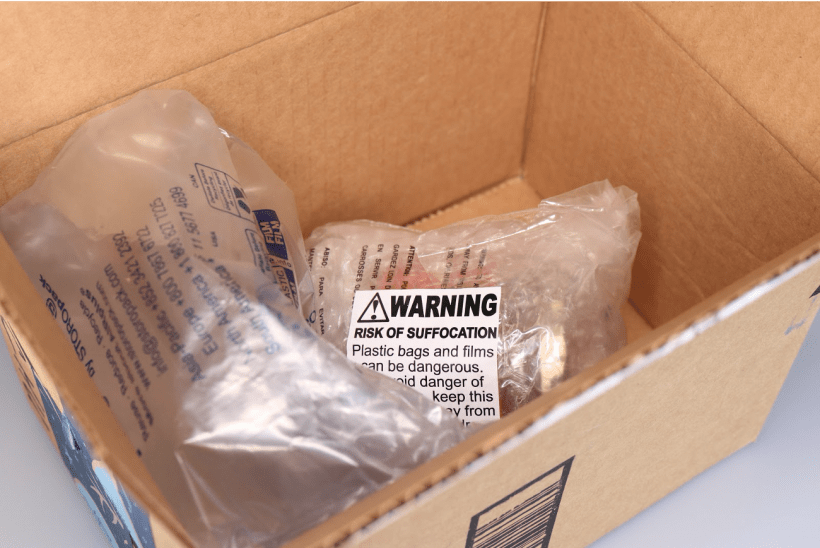
When you open the Amazon box, take out the air cushions and bubble wrap, then you will finally see the jar of kimchi from South Korea that you ordered. It is the jar shown on the product’s page on the Amazon website (or app). It is what Amazon promised to deliver; what boxes, air cushions, and bubble wrap—which, from a consumer’s point of view, seem unnecessarily large and excessive—are intended to protect, and what all the barcodes and numbers on the box signify. Yet the jar is layered with a very flimsy plastic paper, which seals the bottle completely. It is filled with pictures and texts, barely leaving any space on it. Some of the information on this layer is mandatory for customs clearance and retail sales in the United States. Still, much of it is for marketing purposes, being intended to appeal to potential consumers of kimchi outside Korea. This package on the jar, designed by the South Korean kimchi manufacturer, shows what the manufacturer wants to explain about their kimchi product and how they think about foreign consumers of kimchi, including those who would buy kimchi from Amazon.
Textual information on the jar is in three different languages, but none of it is a matching translation of the information in another language.
English words suggest that kimchi in the bottle is not too spicy and suits demands for healthy vegan dietary. Information in Korean is carefully curated to emphasize the South Korean origin of the kimchi. Product name in Mandarin also signals “Koreanness,” but to distinguish it from Chinese style kimchi/pickle. The configuration of multi-language information on a little kimchi jar shows how the South Korean manufacturer compartmentalizes their American consumers, speculates on the expectations of each group, and diversifies their marketing strategies using various languages.
Click to view slideshow of kimchi jar detail. Photos by Heangjin Park.
Do their marketing strategies work? Some Amazon reviews show that people buy jarred kimchi from Amazon because they live in areas where they cannot find any local stores that sell kimchi. Very few seem to notice that the jarred kimchi is from South Korea, or at least not many care about it. Instead, many Amazon reviewers compare the jarred kimchi with other kimchi (un)available in their local settings. Some find consolation that it is still better than worse alternatives in their local stores. For some, it only aggravates the pain of not living near Asian groceries where they could find “spicy, authentic, and fresh” kimchi.
Click to view slideshow of Amazon customer review highlights.
Amazon’s digital-logistical network brokers between South Korean kimchi manufacturer’s aspiration to reach foreign markets beyond its national/ethnic boundaries and American consumers’ desires to reach exotic/cultural commodities that are unavailable in their local settings. The mediation, nevertheless, is far from being seamless. Amazon’s digital platform, which enables consumers to navigate the pictures of jarred kimchi in their homes, might render the distance between producers and consumers less noticeable. Still, disjunctures in desires and expectations remain uncompromising, due to the distance maintained and managed by Amazon’s digital-logistical networks. When consumers open the Amazon box, take out air cushions and then the bubble wrap, they finally face the jar they saw on the Amazon webpage. But with a “POP,” the jar opens, they smell dissonance, and taste a jumble of expectation and disappointment.

Choose the next route to Fulfillment:
Fulfillable?
Like Pandora’s Box — promising fulfillment but delivering the ambivalence of hope and chaos — today’s box teeters along the double-edged seams of 21st-century logistical worlds. This point has been driven home with terrifying speed in the context of the novel coronavirus pandemic. As Un/boxing Fulfillment goes to press (so to speak), SARS-CoV-2 has profoundly disrupted everyday life in the United States and around the globe. The flat, networked world that just weeks ago was busily promising fulfillment is today the mise-en-scene of endemic dystopias and narratives of collapsing healthcare systems.
The “magic” of fulfillment blurs now with the “uncertainty” of an unfolding pandemic.
The virus moves not unlike the box, piggybacking alongside tourists, migrants, laborers and highly mobile elites. But it does not announce its whereabouts, at least not on simple command, like the box; instead, doctors and epidemiologists are “flying blind through a pandemic” as testing capabilities lag behind the movements of COVID-19. Meanwhile, the very same just-in-time (JIT) production principles that have long undergirded Amazon’s spectacular feats of delivery are partially to blame for emerging shortages of hospital beds, ventilators and face masks, as healthcare systems worldwide have reduced beds and other supplies in pursuit of “lean” management practices in recent years. From start to finish, the global coronavirus crisis is intimately bound up with our logistical ways of life.
For years, the box has been chattering to and through scanners, geographic zones, supply chains, memes and customer desires. In recent weeks, chaos has been unleashed along the very same circuits as those traveled by the box. What then might the box still have to say in this moment of deep unease and delayed/disrupted fulfillment?
Fulfillable? (2020) by Heangjin Park.
Choose the next route to Fulfillment (?):
Acknowledgements
The authors would like to thank Sophie Peck and Philana Woo for crucial research assistance for this project. Additionally, Philana served as the multimedia producer, providing key design and editorial support to help us realize the multimodal vision of the reader experience.
References
Irvine, Judith T. and Gal, Susan. “Language ideology and linguistic differentiation.” In Regimes of language (P. Kroskrity, ed.). Santa Fe, NM: School of American Research Press. 2000.
Klose, Alexander. The Container Principle: How a Box Changes the Way We Think. Cambridge, MA: The MIT Press. 2015.
Latour, Bruno. “Introduction: Opening Pandora’s Black Box.” In Science in action: how to follow scientists and engineers through society. Cambridge MA. 1987.
Latour, Bruno. Pandora’s Hope: Essays on the Reality of Science Studies. Cambridge, MA: Harvard University Press. 1999.
LeCavalier, Jesse. The Rule of Logistics: Walmart and the Architecture of Fulfillment. Minneapolis, MN: University of Minnesota Press. 2016.
Levinson, Marc. The Box: How the Shipping Container Made the World Smaller and the World Economy Bigger. Princeton, NJ: Princeton University Press. 2016.
Lyster, Clare. Learning from Logistics: How Networks Change Our Cities. Basel: Birkhäuser. 2016.
Mitchell, Timothy. Rule of Experts: Egypt, Techno-Politics, Modernity. Berkeley, CA: University of California Press, 2002.
National Foundation Forest. Midewin National Tallgrass Prairie: A Shared Vision for Restoration. Missoula, MT. 2011.
Robinson, Derek. “Variable”. In Software Studies: A Lexicon (Matthew Fuller, ed.). Cambridge, MA: MIT Press, 2008.
Sammon, Alexander. “Elwood, Illinois (Pop. 2,200), Has Become a Vital Hub of America’s Consumer Economy. And It’s Hell.” The New Republic. 2019.
Vertesi, Janet. “Seamful Spaces: Heterogeneous Infrastructures in Interaction.” Science, Technology, & Human Values 39 (2): 264-284. 2014.


